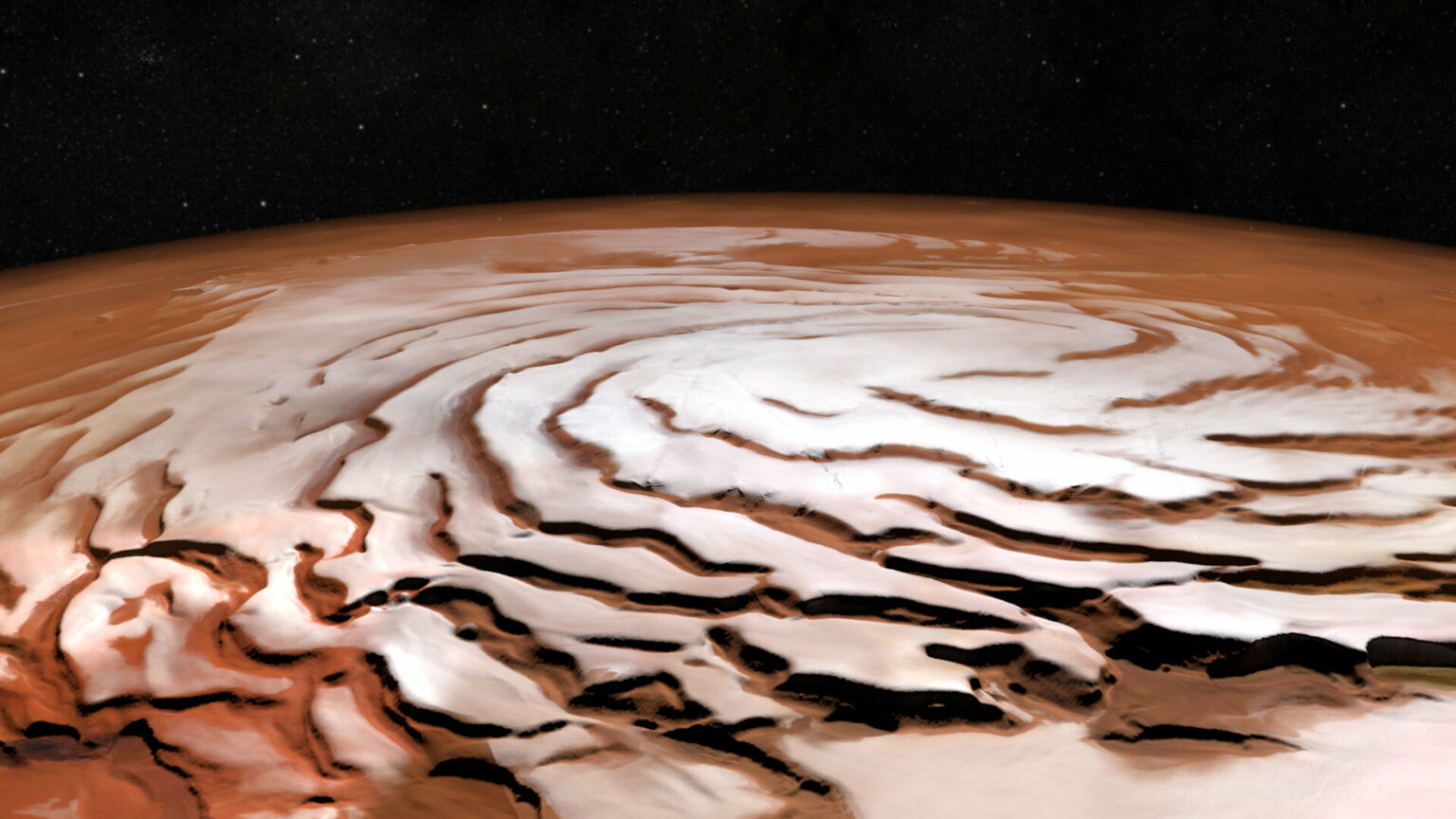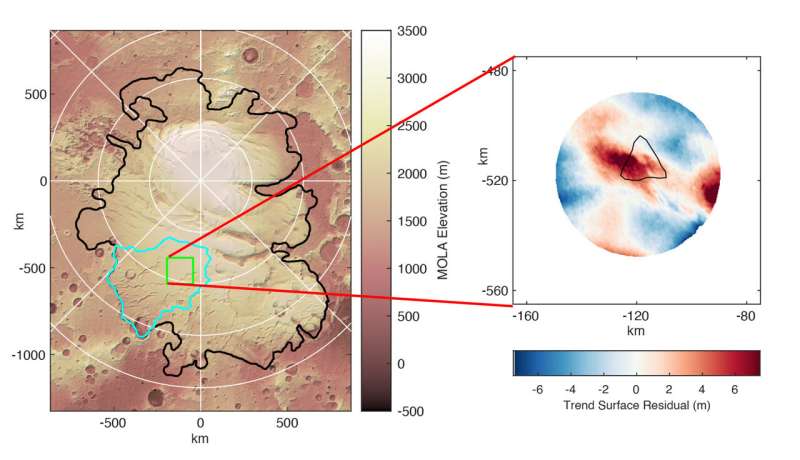Analysis of the surface irregularities of the ice cap at the South Pole of Mars indicates that the structure found by radar under its surface may be a lake. Therefore, there is liquid water on the Red Planet.

Signals from under the ice cap
On Mars, as on Earth, there are polar caps, which partly consist of frozen carbon dioxide, and partly of water ice. Scientists have long been dominated by the opinion that this shell is dense and there is no liquid water there.
However, in 2018, the MARSIS radar on board the European Space Agency’s Mars Express spacecraft detected a very strong echo under the ice of the southern Polar cap, which was interpreted as the presence of liquid water.
Later it was proved that other materials, for example, frozen basalt lava, can give the same signals. And the presence of liquid water needed some sources of volcanic heat, which have not been found. Liquid water at the poles of Mars remained in question.
How liquid water under ice reveals itself
New evidence that liquid water may be hiding under the southern ice cap has emerged after a very detailed map of its surface was compiled using the Mars Global Surveyor laser altimeter.
The study found a 10-15 km-sized structure in the form of a depression and associated uplift. From the experience of studying subglacial lakes in Antarctica, scientists know that they affect the interactions of ice with soil. The friction decreases, and the speed of movement increases accordingly.

As a result, wavy shapes are formed on the surface of the glacier, similar to those found by the Mars Global Surveyor. Scientists have tested on a computer model how a glacier will behave in such conditions on Mars, and confirmed that the situation will be no different from Earth’s.
Most likely, there are really hidden lakes under the surface of the ice cap of the South Pole of Mars, where there is liquid water. The cause of their occurrence could be tectonic activity that heated these places relatively recently. This is in good agreement with the latest seismographic data showing that the Red Planet is not as dead as it was thought until now.
According to Рhys.org
Follow us on Twitter to get the most interesting space news in time
https://twitter.com/ust_magazine

